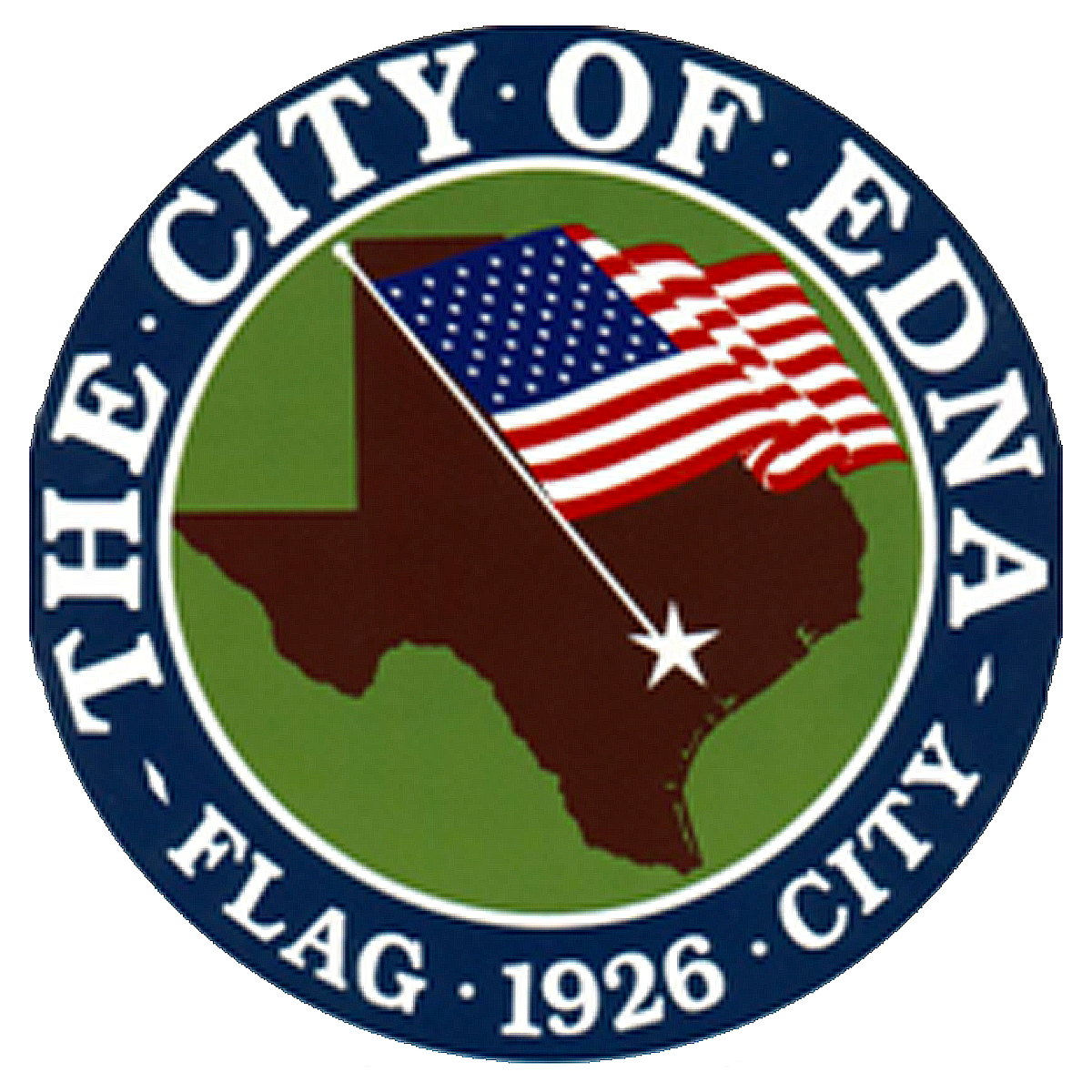History of Edna
About the City
Situated at the intersection of U.S. Highway 59 and State Highway 111, 25 minutes away from the Victoria Metropolitan Area and two hours from Houston, Edna is steeped in history and offers an appealing small-town lifestyle with good schools, sound business opportunities, and an array of local and regional events, recreation activities, and historical sites.
Settlement
Edna traces its history to the settlement of the Texana town site in 1824. Texana served as the focal point of county activities until the railroad bypassed Texana in favor of the current Edna town site.
Around 1880, local businessmen in Texana were approached by railroad promoters to route the soon to be built, New York, Texas and Mexican Railway through Texana, the county seat of Jackson County. Even a bonus of $30,000 offered by the promoters to the town, did not convince Texana citizens. They refused the offer. The railroad by-passed Texana, seven miles to the north and the Town of Edna was born.
It was Mrs. Lucy Flournoy, who in 1882, conveyed to the New York, Texas and Mexican Railway Company, its right of way through the Robert Guthrie league and a half interest in the Edna town track of 800 acres in consideration of the building of the present railroad through the town and the plotting of the town into convenient blocks, lots, and streets. It may be truly said that Mrs. Lucy M. Flournoy, was the "Mother of Edna."
Naming of Edna
Edna is located near the center of Jackson County. The town was named for a daughter of Count Joseph Telferner, and Italian nobleman and financier, the contractor and builder of the New York, Texas and Mexican Railroad. He was co-founder together with Mrs. Lucy M. Flournoy. The count had three daughters, Edna, Louise, and Inez, and named the three stations along the railroad in their honor.
First Train
It was a beautiful day on July 2, 1882, that the entire population of Jackson County was on the move. People came by horseback, carriages, gigs, buggies, and wagons. All were coming to see the first through train. They wanted to turn out and celebrate. People milled around for hours before the train arrived. Many were dressed, in the best style of the day, others in typical pioneer and cowboy garb.
Finally, the train came into sight, her whistle blowing, bell ringing, and the multitude shouting with joy. The noise was deafening. It came to a halt beside the box car depot. This train was a wood burner with a speed of 12 to 14 miles per hour. The rails were 50 pounds, spiked to the cross-ties.
The multitude gathered at the Lone Star Hotel, owned and operated by Mrs. Flournoy. Judge F.M. White gave a welcome address. A basket dinner was spread on the ground and it has been remembered to this day as a great feast.
Later that day, the sale of town lots was conducted on the front porch of the Hotel. A large map of the townsite hung on the wall. It is interesting to note the price paid for some of the lots. The Killough corner brought $125, the Allen corner $75, the Utzman corner $90, A.A. Egg's warehouse site $234. The size of the lots were 50 by 140 feet.
At the close of the day, the people all returned home, tired but wiser. Thus came the end to Edna's first day of existence. It was a thrilling and exciting day for all.
Founding Edna
Edna was founded on July 2, 1884. Incorporation was both approved and abolished in 1899. In January 1926 the city was again incorporated and commission form of government was adopted. The city's home rule charter was adopted in 1966.
Flag City
Edna became the "Flag City" in 1968, when the City Council passed a resolution stating that inasmuch as our sons were risking their lives in a conflict on foreign soil; and knowing the draft card burning, protest marches, and anti-war demonstrations aided and comforted the enemy and prolonged the war; the City of Edna condemned all such un-American activities, and wished to show its support of the government of the United States, and decreed that the flag of the United States be flown along city streets until an honorable peace had been secured in Vietnam.
The resolution appeared in national publications, including the Stars and Stripes newspaper in Vietnam. One local citizen, serving in Vietnam at the time, became a celebrity among his peers simply because Edna was his home town. This patriotic, no-nonsense attitude still exists in Edna and is symbolized by the ongoing use of the Flag City motto and the daily display of American flags in downtown Edna.
